What is an Adaptogen?
An adaptogen is a plant or plant extract that is believed to reduce and moderate the body’s physical and chemical responses to stress. Typically, adaptogens are said to affect the endocrine and immune systems by regulating hormones such as cortisol, and improving the body’s ability to fight infections. They can also be used to prevent day-to-day fatigue and promote general good health.
The study of adaptogens arose in the Soviet Union during the Second World War. It was based on the earlier work of Russian ethnopharmacologists, who had investigated hunters who used schisandra berries for endurance. In the decades that followed, the concept of adaptogens was further developed, aSnd they have recently become a popular topic in alternative medicine. Many adaptogenic herbs are derived from Traditional Chinese Medicine, where they are known as tonics.
Below is a list of some of the most well-known adaptogens. It is recommended to rotate through different adaptogenic herbs every few months.
List of Adaptogenic Herbs

Cordyceps Mushroom
Used in Chinese and Tibetan medicine, the Cordyceps sinensis mushroom is a parasitic fungus that uses an insect larva as a host. As the fungus matures, it gradually consumes the larva. Cordyceps was traditionally used to enhance the libido, and in fact, it has been shown to regulate testosterone levels in rats. Additionally, Cordyceps possesses strong antioxidant properties, and in a rat study, it was shown to decrease the chemical signs of stress in the body. Most intriguingly, Cordyceps appears to increase the likelihood that a transplanted organ will be accepted by the body, through the reduction of immune cell infiltration which can lead to damage and rejection.
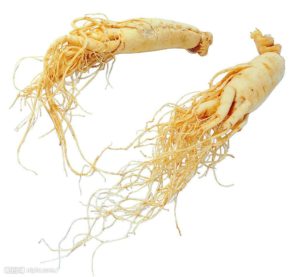
Panax ginseng
Panax Ginseng is the most widely studied variety of ginseng, sometimes called “true” ginseng or Asian ginseng. Well-known as a core of Chinese medicine, ginseng root has been found to contain active compounds called ginsenosides, which can provide anti-fatigue effects. Young, healthy adults who consumed ginseng in a study experienced better focus, alertness, and relaxation, as well as less boredom and fatigue (induced by several hours of psychological testing). Ginseng can also boost your mood for acute periods of up to two weeks. When taken with a vaccination, ginseng can help the immune system respond to the vaccine more efficiently. It may also help respiratory infections heal faster, and it decreases erectile dysfunction. Ginseng is a readily available herb and can be found in extract form, as well as in teas and drinks, and as a whole dried root.
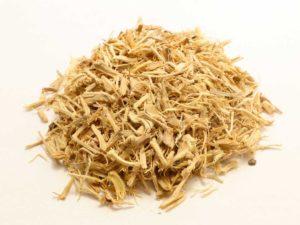
Eleuthero
Eleutherococcus senticosus is often referred to as eleuthero or Siberian ginseng. However, it is only distantly related to actual ginseng and contains different compounds. Once again, the root is the part of the plant used, but in this case its main effect is to improve mood and cognition. In mice who were given Eleuthero, an increase in neurotransmitters and anti-depressive effects was observed (the dosage used, adjusted for humans, would be about 1-3g). In rats, 300mg/kg of Eleuthero significantly reduced cognitive damage and inflammation. Meanwhile, a human study using elderly individuals showed that 300mg daily of Eleuthero for eight weeks increased their social functioning, and some aspects of cognitive ability.
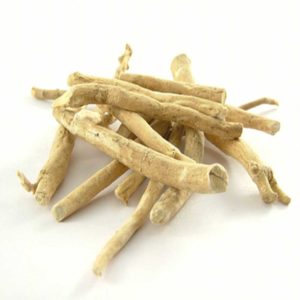
Ashwagandha
Ashwagandha root is an Indian herb from traditional Ayurveda that is often found in a fine powder. It primarily has an anti-stress function and is able to reduce circulating cortisol. A human study of stressed individuals given 300mg of Ashwagandha for 30 days showed that they experienced improved social functioning, and an additional study of cancer patients given 2g three times daily also reported improvements in sociability and well-being. Ashwagandha can also be useful as an anti-anxiety remedy, along with talk therapy and breathing techniques. Finally, a swimming study using rats showed that a group given Ashwagandha swam for nearly double the time of the control group, attesting to Ashwagandha’s ability to improve endurance.
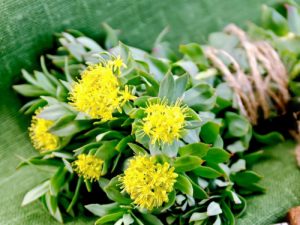
Rhodiola Rosea
This plant is native to the arctic areas of Europe and Asia, and is usually taken at a dosage of 200 to 600mg a day, although lower dosages of about 50mg can be taken effectively and safely for everyday use. Rhodiola is known for its anti-stress and anti-fatigue effects, as demonstrated in two small studies using physicians on night duty and students during exam period. Animal studies using Rhodiola have shown better endurance in swim tests, and better survivability in stress conditions. Another study of 89 individuals with mild to moderate depression, who were given Rhodiola over six weeks, showed anti-depressive effects compared to the placebo. Rhodiola may also improve cerebral circulation and stimulate the production of neurotransmitters.

Holy Basil
A relative of the culinary herb sweet basil, Holy Basil is a sacred plant in India with a history going back thousands of years. Holy basil contains tannins, flavonoids, trace minerals, vitamins A and C, and has been shown in multiple animal studies to reduce the chemical signs of stress, such as corticosterone levels. It also reduced total cholesterol in diabetic and non-diabetic rats, as well as the serum, cortisol and glucose levels of mice. Holy basil has a pleasant scent and can be consumed fresh, dry, as a tea, or mixed with ghee.

Huang Qi (Astragalus Root)
Native to China, Mongolia, and North Korea, Astragalus is well-known in Traditional Chinese Medicine, and has been researched in the United States as a treatment to help chemotherapy patients support their immune systems. It has also been used in the United States as a potential method of preventing HIV infections. Astragalus contains immuno-stimulant polysaccharides, flavonoids, and trace minerals such as selenium. Astragalus can be taken in a dosage of 2-6g per day, and is available in tinctures, pills, and as a dried, powdered whole root.
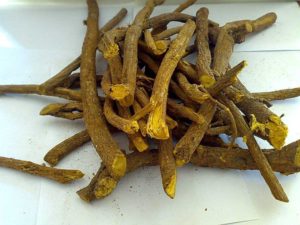
Licorice Root
Licorice root was used by the ancient Egyptians, and was recommended by Pliny the Elder for clearing the throat and overcoming hunger and thirst. Licorice is available as the whole root, but since a compound called glycyrrhiza can cause side effects, it is also available as de-glycyrrhizinated licorice (DGL). DGL can decrease the time taken to fall asleep, and when taken with other herbs (Ganoderma lucidum and Sophora flavescens) licorice can be an effective treatment for asthma symptoms. It is also being researched as a possible treatment for cognitive decline. Chiefly because of its glycyyrhiza content, untreated licorice root can cause potentially serious reactions in some people, but dosages of 150-300mg are typical and safe to use.
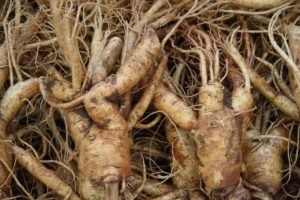
American ginseng
Panax quinquefolius is a relative of Panax ginseng that grows along eastern North America. American ginseng contains many of the same properties as the “true” Asian ginseng, as well as the beneficial ginsenoside content. American ginseng is frequently used in cold remedies, and when taken continually, may help prevent respiratory infections and make their symptoms milder. American ginseng can also reduce blood sugar levels in people with type 2 diabetes, as well as having many of the same benefits as Panax ginseng, listed above.
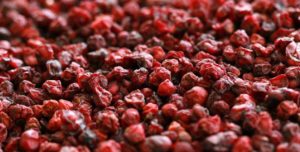
Schisandra
The Schisandra chinensis plant is native to China, Russia, and Korea, where the berries were traditionally used to fight exhaustion. Schisandra berries contain high amounts of lignans, which act hormetically in the body, meaning they induce damage for the purpose of repairing it and making it stronger (similar to physical exercise). Schisandra is especially helpful at treating liver problems, as animal studies have shown that compounds in Schisandra can improve liver function, blood flow, and weight. Additionally, in a human study using women under psychological stress, those who were given the herb combination ADAPT-232 (containing Schisandra, Rhodiola, and Eleuthero) did better on a series of tests measuring speed and accuracy versus a placebo. Schisandra can be found as an extract or pill, or as a whole dried fruit.
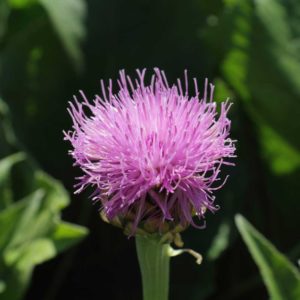
Rhaponticum
Rhaponticum carthamoides was traditionally used in Russian and Siberian medicine to promote strength, especially after an illness. Interestingly,Rhaponticum contains ecdysteroids- hormones usually found in insects which regulate molting and maturation. Although Rhaponticum is often associated with building muscle mass, it is not particularly effective in that regard, because very little of the active compound actually reaches muscles. Instead, Rhaptonticum is an anti-inflammatory, and has been shown in rats to decrease anxiety (as an injection only) and to improve weight control in animals eating a high-fat diet. In a human study, Rhaponticum was given along with Schisandra, Rhodiola, and Eleuthero to women with ovarian cancer who were undergoing chemotherapy. It was observed that these women had increased immune function, as well as lower levels of fatigue and depression, as compared to a control group.
Shilajit
A waxy resin that is used in Ayuerveda. It has a nourishing and energetic effect on the body. It’s a natural anti-inflammatory, anti-oxidant and destroys free radicals.
Reishi Mushroom
Also known as Lingzhi or Ganoderma Lucidim is a fungus that is used for longevity, fighting cancer, stress, anxiety and as a general tonic. It has a long standing clinical history and is traditionally used till this day in chinese culture. It has only recently been classified as an adaptogen.
Are Adaptogens Safe?
Yes, for the most part adaptogens are safe, however; before taking any of the above herbs, it is important to check their dosages and safety information. Some of them, such as licorice root, can create serious side effects in people with certain conditions, or interact negatively with other drugs. With a few exceptions, they should also not be taken by children or pregnant women. Although many adaptogenic herbs are only in the beginning of their research phase, the majority are safe additions to a herbal regime and are often at their best when used in combination with other treatments, both herbal and pharmaceutical.
References:
http://www.ncbi.nlm.nih.gov/pmc/articles/PMC3659612/
http://www.ncbi.nlm.nih.gov/pubmed/21793317
http://www.ncbi.nlm.nih.gov/pubmed/12695337
http://www.ncbi.nlm.nih.gov/pmc/articles/PMC3252722/
http://onlinelibrary.wiley.com/doi/10.1002/ptr.5486/abstract
http://www.ncbi.nlm.nih.gov/pmc/articles/PMC4296439/
http://www.sciencedirect.com/science/article/pii/S1875536413600527
http://www.sciencedirect.com/science/article/pii/S0273230006001127
http://www.ncbi.nlm.nih.gov/pmc/articles/PMC3121254/
http://www.ncbi.nlm.nih.gov/pmc/articles/PMC2952762/
http://www.sciencedirect.com/science/article/pii/S0278691512008290
http://www.sciencedirect.com/science/article/pii/S0031942209001459





